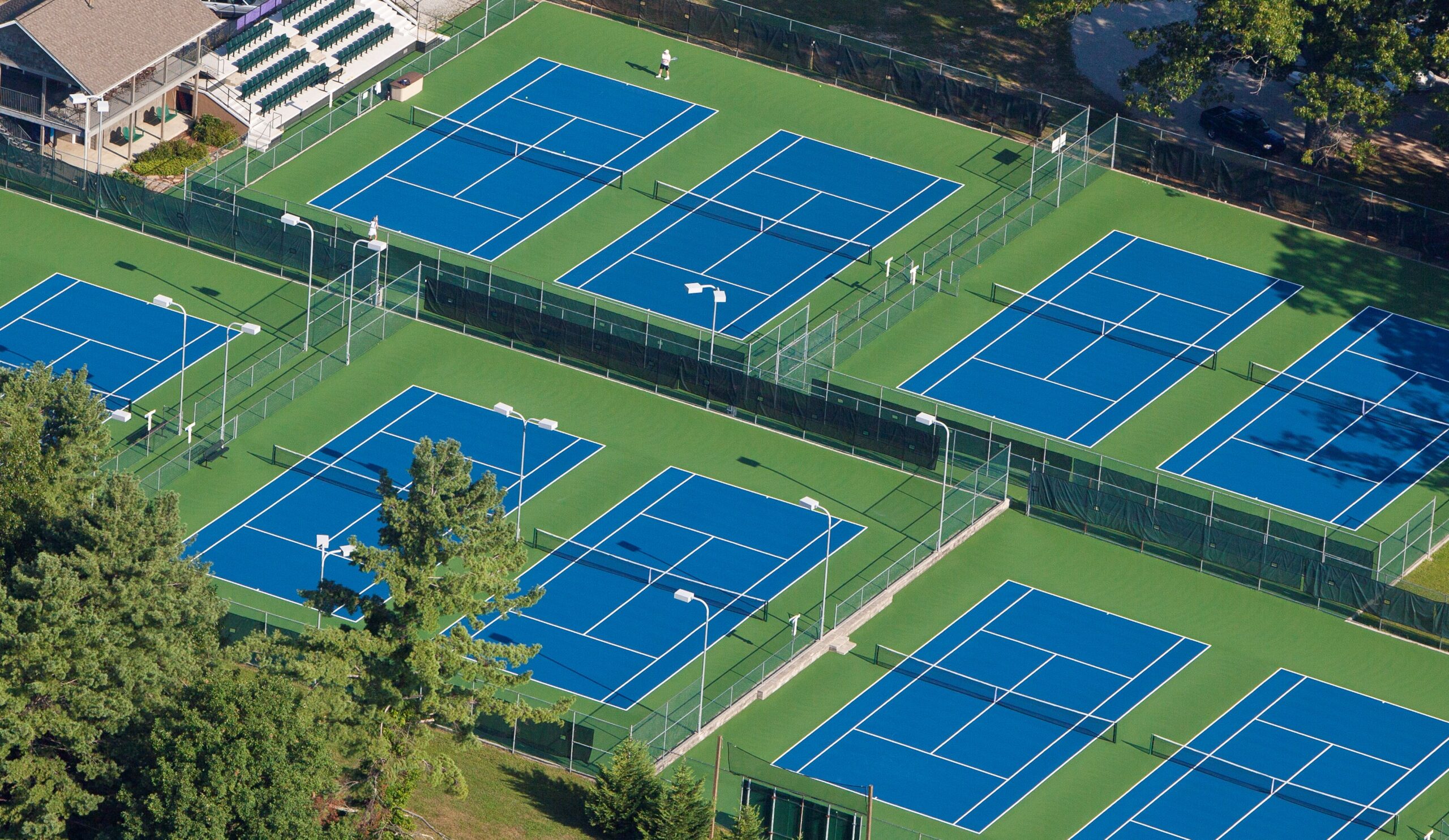Tennis is one of the most popular sports in the world. It’s played by both amateur and professional players, and it can be played at any level. Whether you’re an everyday player or a professional athlete, it’s important to know how to make your tennis court as safe and enjoyable as possible. The following tips will help you with an amazing Tennis Court Design.

Size
The size of the tennis court is one of the most important factors to consider when designing a new tennis court. The dimensions must be between 39.5 and 78.74 meters long and between 20 and 26 meters wide, with a net height of 2.43 meters (8 feet). The dimensions should also allow for an area between the baseline and net appropriate for both singles play and doubles play, as well as allowing for specific lines such as those for out-of-bounds areas or service lines.
Surfaces
To ensure that your tennis court is a safe and enjoyable place to play, it must have the proper surface. A good tennis court surface will be durable, easy to maintain, and able to withstand heavy foot traffic. The best tennis courts are made with a combination of materials such as concrete or asphalt. These surfaces can withstand the wear and tear of the game and provide good traction for players. The type of material used in building your tennis court’s surface should also determine whether you need to invest in additional equipment like nets or fences. For example, if you have an artificial grass surface it’s important that you install netting or fencing around half of your playing area so that balls don’t go flying into neighboring yards while they’re being hit back over the net by opponents
Court Markings
The dimensions of a tennis court are 78 feet wide by 27 feet long. The lines and markings on the court are designed to help players know where they can and cannot play. Here’s what you need to know about each line:
- Service Line: A vertical line that divides the court in half, parallel with the net posts. It is at this point that serves must land when served from behind it, and points scored off of serves must be played from beyond it. This line should be at least 1 foot away from any sideline or baseline so as not to interfere with your opponent’s ability to play out (see below). This line begins 4 inches from each sideline when measured vertically; if you use an electronic tape measure, make sure it doesn’t touch any corners or other parts where these measurements could vary widely due to shading differences caused by sunlight hitting different parts of your yard at different times throughout the day!
- Sideline: One side boundary separating one-half of tennis courts is called “courts”. These boundaries should never be allowed touching anything else such as walls or fences because those objects may cause potential hazards such as falling or injuries when running fast towards them unexpectedly while playing aggressively (i.,e., trying hard). Instead, place padding material like thick foam rubber mats under these areas so people aren’t hurt while trying their hardest!
Fencing
Fences should be high enough to prevent balls from leaving the court. The height of a fence depends on the type of fence and its intended use. For example, if two players are playing indoors and there is no danger of the ball leaving the court, then your fencing may be lower than someone who plays outdoors in an area where balls could bounce onto roads or into other people’s yards. The height should also be low enough to allow players to pass through it without difficulty. If you’re building a new tennis court, consider how many players will be using it at once (and whether anyone under 18 years old will play) when deciding what kind of fencing material you want for your fences. It’s important not only that they can see through them but that they aren’t too tall or heavy so as not to hinder movement during playtime! We hope this article has helped you to better understand tennis court design guidelines so that you can make an educated decision on your next project.

